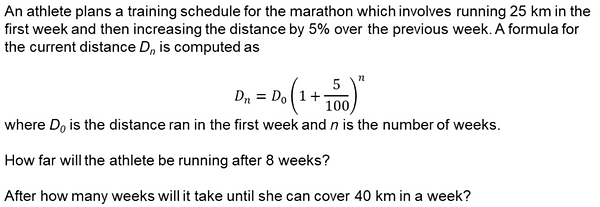SUBJECTS STUDIED AT SCHOOL
DR ALAN WALKER
Senior Lecturer in Mathematics,
University of the West of Scotland
FURTHER EDUCATION:
PhD Mathematics,
BSc (Hons) Mathematics
Biology
Chemistry
Computing
English
Maths
Physics
CAREER JOURNEY SO FAR
Teaching Fellow at the University of Strathclyde
Research Fellow at the University of Strathclyde
Lecturer at the University of South Wales
Associate at Morgan Stanley
Lecturer at the University of the West of Scotland
Senior Lecturer at the University of the West of Scotland

FUTURE ASPIRATIONS
Increase the size of the team of mathematicians and statisticians at the University of the West of Scotland, and provide world class mathematics-related degrees which prepare students for a world of mathematically-related employment in business, finance, engineering, science, teaching, computing...
Q&A WITH ALAN
What does your company/organisation do?
The University of the West of Scotland offers over 100-degree courses at undergraduate and postgraduate level. It also carries out research and consultancy work for industry, and is ranked second in Scotland for the number of Knowledge Transfer Partnerships with businesses. Many courses at the University of the West of Scotland have an emphasis on vocational skills and offer students the option of spending a year working in industry at home or abroad.
What types of activities do you do in your job?
Teaching: I lecture students of mathematics, physics, chemistry, engineering (mechanical, chemical, aeronautical and civil), computing, primary education, sport science, and more. Students in all of these disciplines require a working knowledge of a range of mathematical techniques, and as a mathematician, I am employed to guide and prepare them for the mathematics they might need in their future jobs.
Research: I employ mathematics in my research in liquid crystals (the materials in your flat screen displays) and in ultrasound devices. Using mathematics, I create models which can [hopefully] be used to improve such devices.
Administration: I am the Programme Leader for our BSc (Hons) Mathematics and BSc (Hons) Mathematics with Education degrees. I also sit on the Student Experience Committee, the School Plagiarism Panel, the Scottish Mathematical Council and the Scottish Mathematics Support Network. All of these roles involve making sure that our students get the best possible experience in their education, and are as prepared as possible for the challenges in the 21st Century workplace.
What does a typical day at work look like for you?
-
Teaching Day: Four hours of lectures, tutorials, and maybe computer laboratory sessions with a cohort of students. Administration such as marking, creating assessments, report writing, and supporting students with queries and problems.
-
Non-Teaching Day: Administration such as marking, creating assessments, report writing, and supporting students with queries and problems. Continuing with research problems, investigating ways to improve liquid crystal and ultrasound devices using mathematical modelling.
What are your favourite things about your job?
Getting to discuss mathematics with students and other scientists. Showing how mathematics is used in such a huge variety of ways in such a huge variety of sectors.

HOW ALAN USES LOGARITHMS AND EXPONENTIALS AT WORK
Logarithms and exponentials are useful mathematical tools for describing growth or decay. Exponentiation is just a fancy name for raising to a power. An exponential function has the form 𝑦 = 𝑎^𝑥, and involves variable powers x of a constant base a. The base a is often assumed to be greater than one and the variable power x is known as the exponent. This function will show exponential growth for 𝑎>1 and exponential decay for 𝑎<1. What do you think it shows for 𝑎=1? If I have a maths problems which shows exponential growth (maybe like the spread of a virus in a pandemic!) then I’d be using exponentials to display the growth of the number of people with the virus.
Logarithms are like the opposite of exponentials. So if I know that 𝑦 = 𝑎^𝑥, then I can use the logarithm function to say: 𝑥=log_𝑎𝑦 (every mathematical function has an opposite, or inverse – logs and exponentials are the opposite of each other). I might use the logarithm function to “strip-away” the effects of an exponential function.
Sometimes the base a is a special number called e, which is an irrational constant and crops up in science, and engineering. It is approximately equal to 2.728 and the function 𝑦 = 𝑒^𝑥 and its opposite function 〖y=log〗_𝑒𝑥 (often written 〖y=ln〗𝑥) are very useful for describing exponential growth.
A lot of my work is concerned with sound, and loudness is measured using decibels which makes good use of the logarithm function, as you’ll see below.









